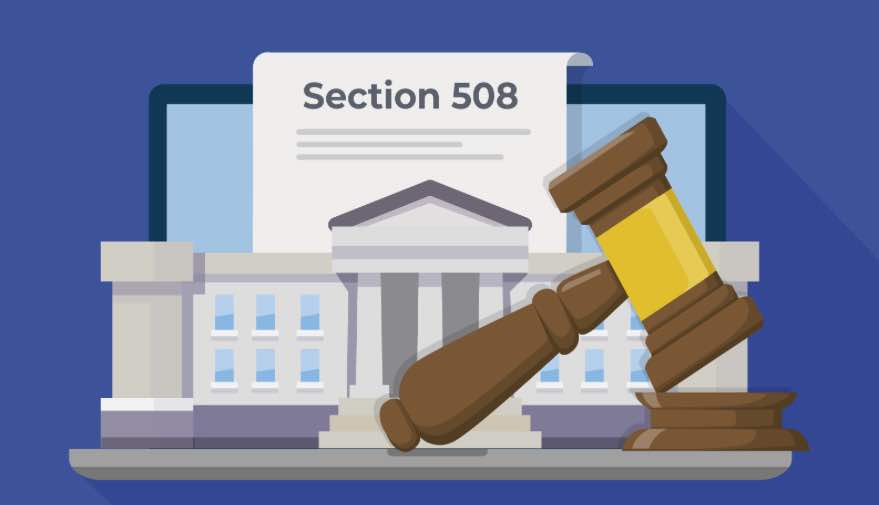We work with a lot of organizations that are grappling with the question of how to comply with the Section 508 requirements. While Federal agencies must comply with the standards, if you want to sell an IT product or service into the US Federal government or states that have adopted Section 508-like standards, you will want to make sure your product or service conforms as well. Prior to getting into that, though, a brief overview of Section 508.
What is Section 508?
Section 508 refers to Section 508 of the Rehabilitation Act of 1973 (as amended). Section 508 does not refer to the Americans with Disabilities Act, although the two are often confused. Section 508 requires that when U.S. Federal government agencies develop, procure, maintain, or use Information and Communication Technology (ICT), Federal employees and individuals with disabilities have comparable access and use of that ICT. Section 508 covers technology purchased by the Federal Government and is included as part of the Federal Acquisition Regulations (FAR).
Executive branch agencies must comply with these regulations when they procure ICT from private entities for development, use, or maintaintenance by the Federal government. The standards which originally were effective in June 2001 were revised in 2017. The revised Section 508 standards (often called the “Refresh”) cover ICT broadly to include software, mobile apps, websites, specific classes of non-web documents, and hardware applications such as computers, mobile devices, kiosks, networks, peripherals, and other types of digital office equipment. Generally speaking, agencies must procure the most accessible product that meets the business needs of the agency.
Many states such as California, Texas, Massachusetts, and Virginia (including their institutions of higher education) have adopted Section 508-like standards and may request that these standards be met as part of procurement of ICT.
How do I conform to Section 508 Standards?
The revised Section 508 standards address conformance to ICT. While there are some exceptions to Section 508—for national security, functionality only available in maintenance spaces, etc.—exceptions are generally not applicable to most used ICT-related products and services. To conform to Section 508, you will need to design and create content that follows accessibility standards. For example, for web-based content, non-web electronic documents, and native software, you will need to conform to the Web Content Accessibility Guidelines (WCAG) 2.0 Level A and AA which are included in the 508 standards by reference. Depending on software features, there may be additional standards that need to be met including those for software, platforms, and tools that allow authoring of content. For hardware, there are hardware-specific standards that need to be met.
Functional access by users with disabilities is important because agencies need to ensure the overall system is usable to individuals with disabilities. US Federal agencies and programs receiving federal funding need to ensure their programs and services do not discriminate against people with disabilities under another section (Section 504) of the Rehabilitation Act (as amended). Many agencies will test content or ask you to document level of support with assistive technology and accessibility features commonly used by people with disabilities to ensure that employees and the public can equitably access information.
In addition, the Section 508 standards cover the accessibility of information, documentation, and support provided with a given ICT system. They require that provided digital support and documentation be directly accessible to end users and that that customer and technical support communications be implemented in an accessible fashion.
The best way to ensure you meet the standards is to design your content to follow the standards, have the content audited for accessibility by a third-party vendor, and verify that is accessible to people with disabilities by having users with disabilities perform testing using assistive technology.
While most people are aware of the WCAG 2 standards, it’s important to remember that Section 508 covers support and documentation and agencies have a responsibility to make sure apps, websites, documents, and other content such as websites are usable by employees and the public that have disabilities.
Below are three questions that may be helpful when considering conformance:
- Did we write the application in a fashion that conforms to the requirements in the relevant standards?
- Can people with disabilities use the application to complete the core tasks of the application? Does the application as a whole produce an accessible experience?
- Is the deployment context of the application accessible? Does the information, documentation, support, and training produce an accessible experience?
Often, Federal agencies procuring ICT will request an Accessibility Conformance Report (ACR) in Voluntary Product Accessibility Template (VPAT) format. The VPAT format is used to report on the level of conformance a product or service has to the revised Section 508 standards. While anyone can create an ACR in VPAT format, it is best to have a third-party ACR created by a reputable accessibility partner.
For more information, please visit our Section 508 Compliance page.




